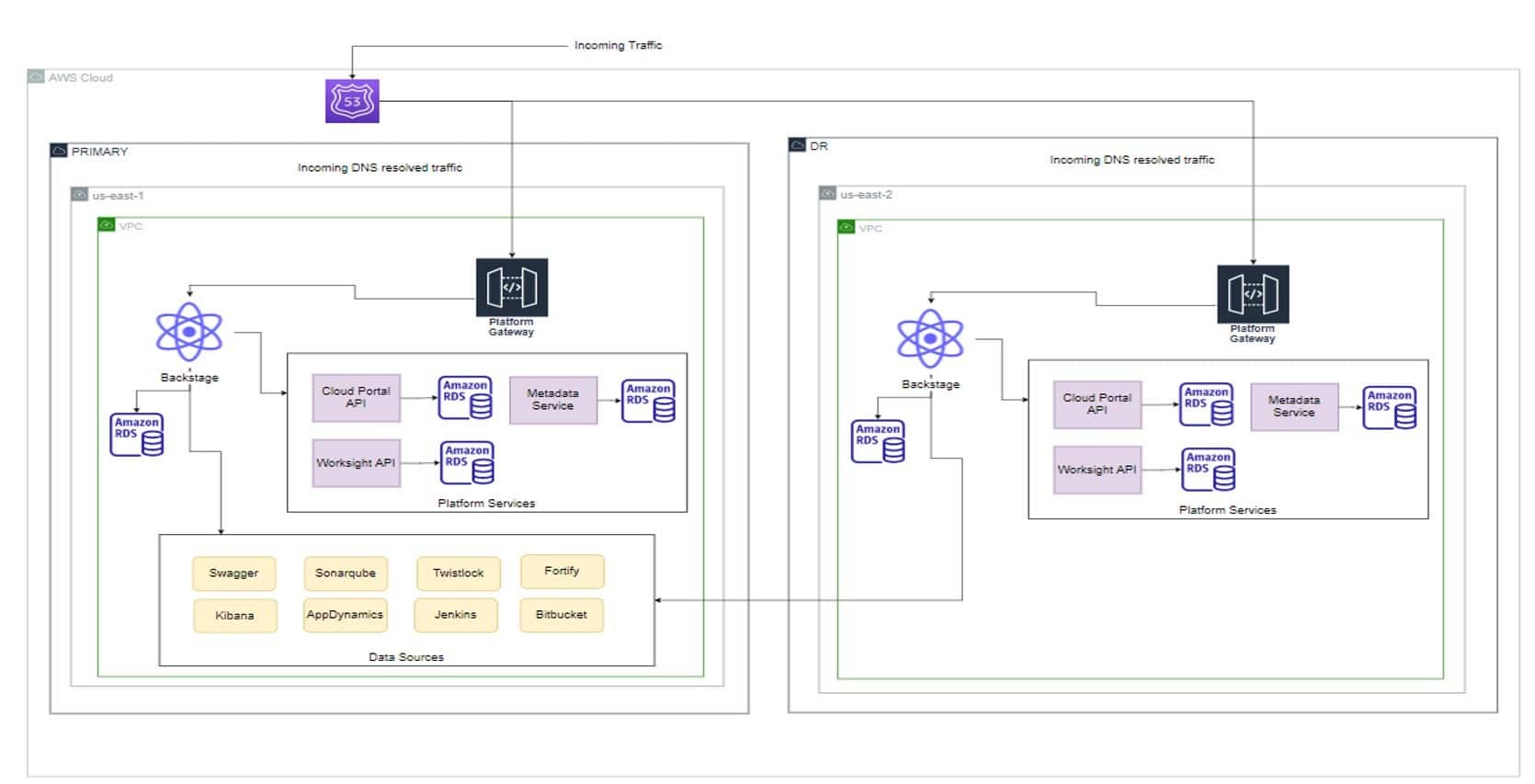
How an Infosys insurance client increased developer productivity using Backstage
Challenge
The workplace “silo mentality” is a widespread problem across enterprises. An isolated mindset, it is a problem associated with company culture, business operations, and often technology. People with this ethos believe that they belong to a specific group and will often not share resources and information with any outsiders. Down the line, a silo mentality generates siloed workplace experiences and non-distributed knowledge bases. In IT organizations where the majority of the workforce is developers who drive the success of companies, a siloed mentality can reduces productivity, efficiency, and effectiveness.
A silo mentality can arise from developer frustration. Developers are backbone of the IT organization so it is essential to provide them with a best-in-class experience so they can stay motivated, focused, and hyper productive. To address this issue, many organizations are focusing on “developer experience,” also known as DX or DevEx.

How do you get rid of silos in the workplace and how do you implement a delightful developer experience? How do you optimize productivity?
The answer is to implement a developer experience platform that addresses the above challenges. One of the Infosys US insurance, retirement and annuity clients faced these challenges and to resolve them Infosys implemented Backstage.io as a developer experience platform.
Solution
Infosys compared various platform like OpsLevel , Cortex and Backstage and recommended the Backstage platform. Infosys decided to bring in Backstage as a DX Platform to provide an aggregated view into all tool stacks, establish standardization, scaffold reference implementation, and create self-service capabilities in the client ecosystem.
Backstage is an open platform for building developer portals. Backstage was accepted to CNCF on September 8, 2020, and moved to the Incubating maturity level on March 15, 2022. Backstage unifies an organization’s tooling, services, apps, data, and docs into a single, consistent UI that allows developers to easily create, manage, and explore software. It is powered by a centralized software catalog; it restores order to the infrastructure and enables a client’s product teams to ship high-quality code quickly — without compromising autonomy. The service catalog in Backstage acts as a digital registry that enables all company members to find and access the resources they need.
Backstage has four core components as shown below:

Solution approach
The Infosys team started with a due diligence and discovery phase to understand the business and technology pain points. Then it was time to set and configure Backstage for various environments and a variety of scaffolding self-service templates were also installed. A number of integration touchpoints were established for Bitbucket, Swagger, Jenkins, AppDynamics, CMDB, SonarQube, Fortify , Twist Lock, Kibana, AWS S3 and OKTA. Over time the team developed 20+ custom plugins to address the client’s actual business requirements. Finally, Backstage was deployed using Docker and Kubernetes on Dev, QA, Model and Prod environments (AWS).
The tech stack used
Backstage Open-Source Platform v1.11.0, ReactJS , NodeJS, TypeScript, Material UI, OKTA, AWS, AWS S3 (entities in an S3 Bucket), AWS ECR, ECS (Fargate), Yarn, Docker, PostgreSQL
Solution Architecture

Backstage deployment approach with AWS Fargate and Aurora

Impact
This developer experience platform solution had a substantial impact on the client’s overall productivity. The Backstage developer experience platform solution:
• Created a unified vision of collaboration for the customer.
• Built a unanimous information hub for various line of business (LOBs) across geographies.
• Started the “Work, Train, and Grow Together” culture in the organization.
• Improved communication and reduced workplace friction.
• Streamlined development processes, workflows and the developers’ journey.
How good DX helped our client
Good DX boosted their level of efficiency, enabled a culture of innovation in the developer community, and ultimately made them happy and more committed to their assigned work which resulted in delivery of higher business value. Developers produced reliable applications faster which in turns increased the profitability for the client.
Optimization metrics
• Onboarding time for new developers reduced by 40%
• Improved developer productivity so products got to market faster by 25-30%.
• Improved the efficiency and effectiveness of developers by 20%.
• Enhanced collaboration, self-service, and automation by 25%.
• Deployment frequency (DF) increased by 35%.
• Lead time for changes (LTC): Time from code commit to production is faster by 20%.
Benefits observed by various stakeholders
▪ Engineering managers were allowed to maintain standards and best practices across the client organization and found it easier to manage the entire tech ecosystem.
▪ For end users (developers), it started a culture to build new software components in a standardized way very quickly without too much noise.
▪ Platform engineers achieved extensibility and scalability because they could easily integrate new tools and services via existing plugins and customized plugins.
▪ For everyone else in the organization, it was a single, consistent experience that tied together all their infrastructure tooling, resources, standards, owners, contributors and admins together in one place.
By the numbers
35% increased
deployment frequency
20% faster
LTC (lead time for changes)
25%-30%
improved developer productivity